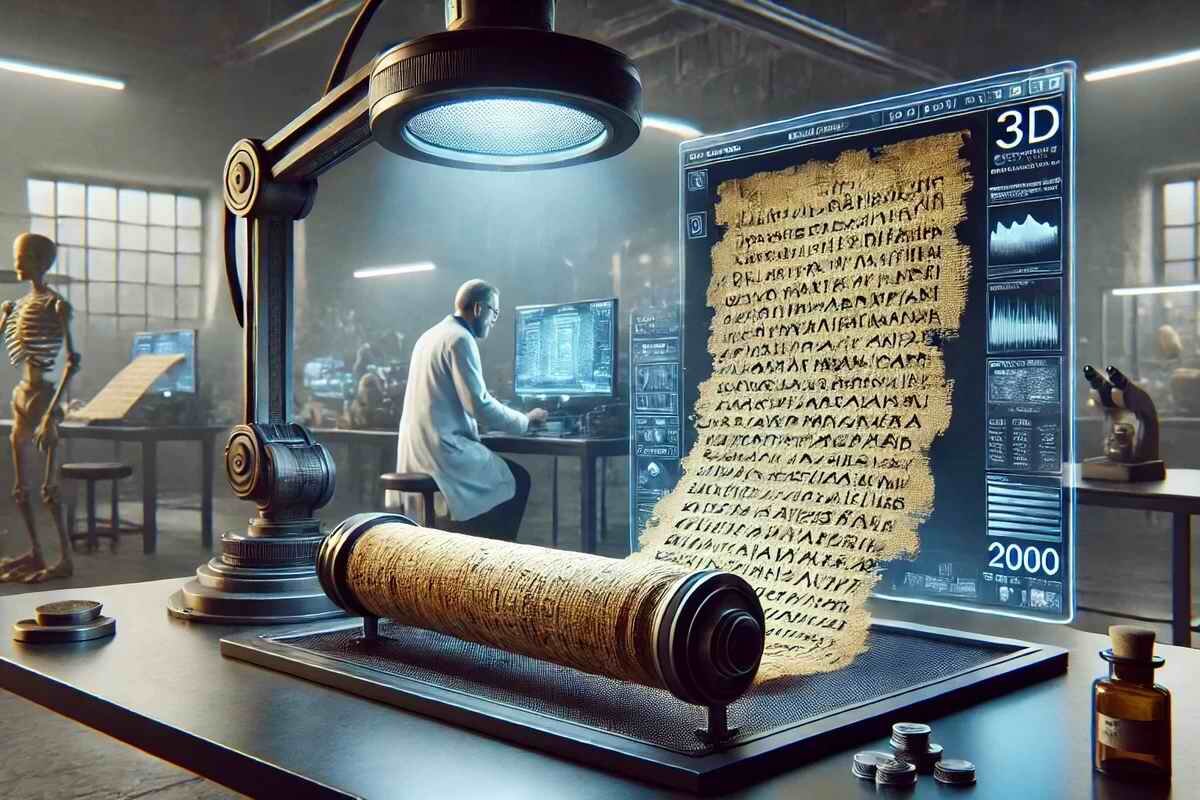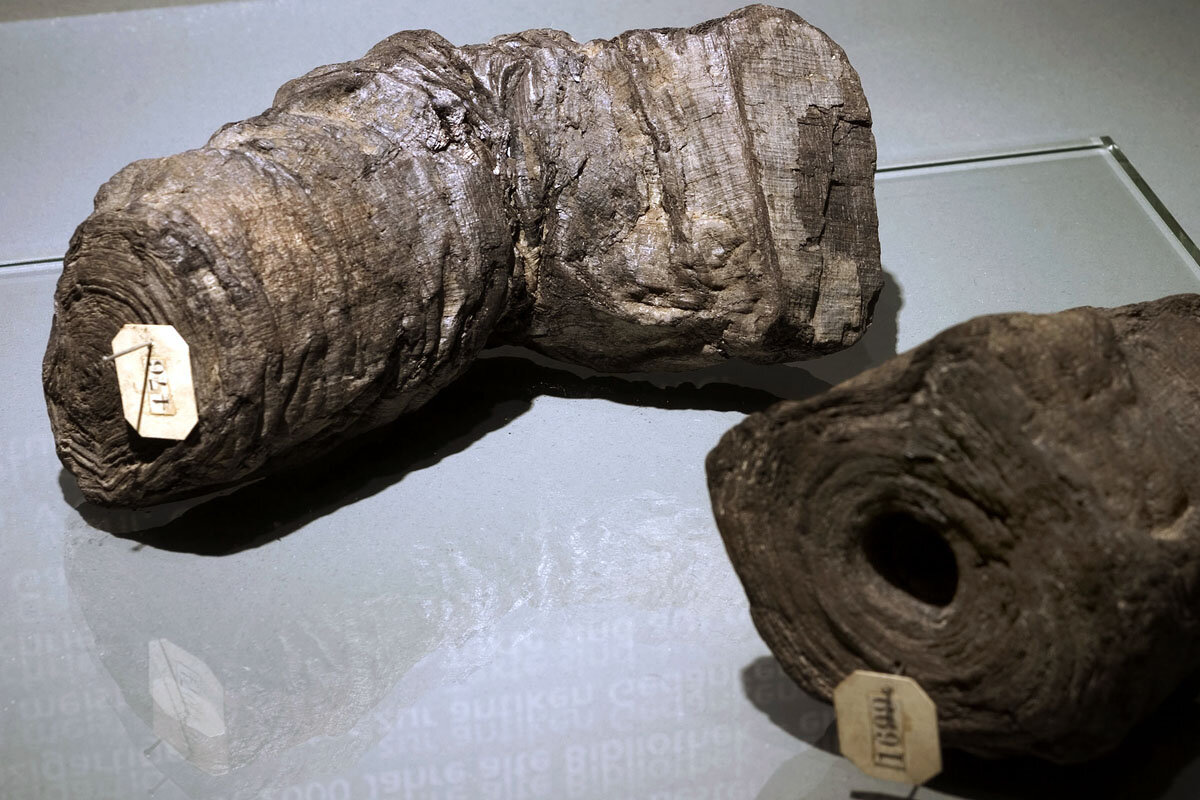In 79 AD, the eruption of Vesuvius buried Herculaneum, a town near Pompeii, and Senator Piso’s library, which was filled with papyrus scrolls. Found charred, these ancient texts are now being revealed using scanners and other cutting-edge technology.
Buried under the ashes of Vesuvius after the eruption in 79 AD, the impressive library of the villa in Herculaneum, probably owned by Lucius Calpurnius Piso Caesoninus, the father-in-law of Emperor Julius Caesar, was reduced to charcoal. Its precious papyri, discovered in 1750, were initially severely damaged by clumsy attempts to open them. By trying to unroll them by hand, when their layers were stuck together, the first restorers in the 18th century destroyed part of the texts. It was not until the 21st century that a non-invasive approach finally offered hope of reading them without damaging them.
After remaining unreadable for more than two millennia, technology, and more specifically artificial intelligence, is now revealing the secrets of these papyri. As reported by the New Scientist website on Tuesday 14 October, a team of international researchers has succeeded in bringing these writings back to life using X-rays. ‘The fact that they are charred is ultimately the only reason we still have them,’ explains papyrologist Federica Nicolardi of the University of Naples, pointing out that this paper degrades easily outside of dry climates.
The soot-based ink, difficult to discern
The scrolls from Herculaneum, a town near Pompeii, are mostly works by the Epicurean philosopher Philodemus of Gadara, whose patron and protector was Senator Piso. In the 2000s, American researcher Brent Seales, from the University of Kentucky, became fascinated by these relics and set about reconstructing them virtually using three-dimensional scanners. While the soot-based ink, invisible to X-rays, proved difficult to work with, the scientist hypothesised that artificial intelligence could help him distinguish this ink from the carbon that had degraded the work.
In 2019, a team joined him and, in 2023, they launched the Vesuvius Challenge, an international competition in which programmers and researchers compete to find tools that would enable the digitised papyri to be read.

2,000 words already decrypted
Thanks to their algorithms, students Youssef Nader, Luke Farritor and Julian Schilliger succeeded, for the first time in twenty centuries, in revealing words, including porphyras (‘purple’). The text turned out to be Philodemus’s reflection on ‘food, music and pleasure’. Their work earned them the grand prize of €602,000. In May 2025, it was the turn of two German researchers to make new advances. In particular, they identified a complete title: ‘Philodemus, On Vices’.
For physicist Giorgio Angelotti, now head of the project, this research has become ‘a quest to restore the cultural heritage of (his) homeland’. With the continuous improvement of scanners and AI, researchers hope to soon be able to ‘download the text’ from each scroll. While 2,000 words have been identified at this stage, other papyrus scrolls are still waiting to be unearthed, including potential documents related to the Apostle Paul, who once visited Herculaneum.




